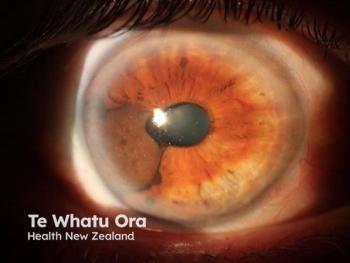
Follicular Unit Excision Successful in Treating Acne Keloidalis Nuchae
The treated areas remained clear up to 18 months after treatment with follicular unit excision.
In 3 patients receiving follicular unit excision (FUE) instead of laser hair removal (LHR) for treatment of acne keloidalis nuchae (AKN), FUE successfully resulted in long-term disease remission.1 By using small punches to remove the unit groups, large wounds and scars were avoided.
Patients were treated at a Los Angeles-based dermatology clinic specializing in hair and scalp disorders. Patients had been treated for papular AKN unsuccessfully with medication and did not want to undergo LHR due to the risk of patchy hair loss.
Follicular Unit Excision Methods
FUE targeted the removal of single follicular units in the center of observable AKN papules while preserving the hair follicles not associated with AKN lesions. The procedure was performed using a punch with The Intelligent Punch, and its driver with DrUGraft Zeus (Dr U Devices Inc). The punch and punch driver allowed for punch texturing, flaring, configurations, and manipulation of movement forms and torque forces that could be adjusted for skin thickness and firmness.
For the 3 patients treated, the dashboard setting for hard, thick skin was selected with torque and movement settings favorable to the skin conditions of AKN lesions. The extraction zone was left open to heal by second intention healing and either Aquaphor or bacitracin ointment were applied twice daily.
The Cases
In the first case, a Black man 26 years of age was treated for a 5-year history of AKN papules primarily affecting the nape area and associated pruritis. The patient also had perifollicular infundibulo-ishmic lymphocytoplasmic infiltrates with fibrosis (PIILIF) on trichoscopy and histology, affecting his entire normal-appearing scalp zones. He initiated treatment with minocycline 100 mg twice a day before FUE treatment and continued for 6 weeks postoperatively. After treatment, his nape area remained clear for 9 months. His PIILIF-affected areas were treated with topically.
The second case involved a Hispanic male 37 years of age with a 10-year history of AKN and follicular papules and folliculitis decalvans (FD) plaque occupying his entire crown. He also had PIILIF involving his scalp. At 9 months posttreatment, the area remained clear of AKN. The PIILIF was treated topically, and the FD was treated by surgical excision.
The third case was a Black man 42 years of age with a more than 10-year history of AKN, mostly on his nape area. FUE was used to treat his beard and the back and sides of his scalp. At 18 months posttreatment, the area remained clear of lesions.
Limitations of the study included the small sample size and that the study was retrospective. Study authors concluded that “FUE hair removal was an effective therapy that resulted in long-term disease remission with esthetically satisfactory results.”
Reference
- Umar S, Khanna R. Papular acne keloidalis nuchae treatment success using follicular unit excision. JAAD Case Rep. 2023;39:96-100.
doi:10.1016/j.jdcr.2023.07.013
Newsletter
Like what you’re reading? Subscribe to Dermatology Times for weekly updates on therapies, innovations, and real-world practice tips.


















